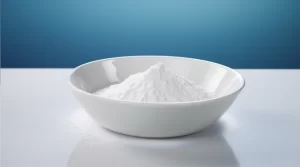ステファニンはマクロファージM1の極性化を阻害することにより、炎症性関節炎を緩和する。
Rheumatoid arthritis (RA) is a chronic autoimmune disease characterized by synovitis and destruction of bone and cartilage. Although the pathogenesis of RA is not fully understood, synovial fibroblasts, macrophages and lymphocytes are involved in the pathogenesis. The concentration of synovial macrophages was positively correlated with the degree of joint injury and disease activity. TNF and IL-6 promote joint inflammation in RA, and M1-type macrophages are thought to be major producers of these pro-inflammatory cytokines. Targeting synovial macrophages may help alleviate the symptoms of RA and provide new treatments for other macrophage-driven diseases.
Study details
Based on these mechanisms, researchers from the Department of Rheumatology and Immunology of West China Hospital explored in detail the blocking effect of Stephanolin (CEP) on M1 polarization and its relieving effect on inflammatory arthritis, results recently published in the journal International Immunopharmacology, The title was “Herbal compound cepharanthine attenuates inflammatory arthritis by blocking macrophage M1 polarization.” Dr. Chenyang Lu is the first author, Dr. Ruijuan Cheng is the co-first author, Professor Yubin Luo is the co-corresponding author, and Professor Yi Liu is the corresponding author.
Research result
Given the important role of synovial macrophages in the pathogenesis of RA, M1 macrophages, a proinflammatory cell type, are an effective therapeutic target. In this study, we found that CEP has a strong antiarthritic effect in CIA animal models, significantly inhibiting mononuclear/macrophage infiltration and inflammatory cytokine secretion. CEP can also inhibit monocyte chemotaxis by down-regulating CCR2 expression and inhibiting ERK1/2 phosphorylation. In addition, CEP may inhibit M1 polarization of macrophages by blocking the activation of TLRs-MyD88/IRAK4-IRF5 signaling pathway and regulating glycolytic metabolism.
This study found that CEP delayed the development of arthritis in CIA. CEP reduces synovial inflammation, inhibits pannus formation, and reduces the severity of arthritis. CEP and MTX have considerable antiarthritic effects. In addition, CIA mice treated with CEP had higher bone mass than those treated with MTX. This may be because CEP can inhibit osteoclast formation and has a relatively stronger antiosteolytic effect than MTX.
Monocyte-derived macrophages (MDM) are the main source of cytokines and chemokines in RA arthritis. We established an in vitro model of macrophage polarization using THP-1 cell line and bone marrow-derived macrophages (BMDM). It was found that CEP significantly reduced the proportion of CD11b+CD68+CD80+ macrophages (M1 macrophages), but did not increase the number of CD11b+CD68+CD206+ cells (M2 macrophages), suggesting that CEP could selectively inhibit M1 polarization without interfering with M2 polarization.
In this study, RNA-seq showed that CEP down-regulated genes were mainly enriched in cell cycle, cell response to cytokine stimulation, chemotaxis, cell proliferation, IL-1β and IL-6 production, and toll-like receptor signaling pathway. GSEA analysis confirmed that CEP inhibited genes involved in inflammatory pathways, including IFN-γ responses and IL-6-JAK/STAT3 pathways. CEP down-regulates the expression of many cytokines and chemokines. Toll-like receptors (TLR) are important receptors that mediate the activation and polarization of macrophages. We found that CEP inhibits IRAK4 phosphorylation and nuclear translocation of IRF5 during LPS-IFN-γ-induced polarization of macrophage M1. These findings suggest that CEP inhibits its inflammatory phenotype by blocking the TLRs-MyD88/IRAK4-IRF5 signaling pathway in M1-polarized macrophages.
This study confirmed the therapeutic effect of CEP in collagen-induced arthritis (CIA), and found that CEP can inhibit MN chemotaxis and M1 macrophage polarization, which has a strong anti-arthritis effect, which may be due to the blocking of TLRs-MyD88/IRAK4-IRF5 signaling pathway by CEP. The M1 polarization process was blocked by inhibiting the glycolysis pathway. Selective blocking of M1 polarization of macrophages may provide a new alternative therapy for the treatment of inflammatory arthritis.
Lu C, Cheng RJ, Zhang Q, Hu Y, Pu Y, Wen J, Zhong Y, Tang Z, Wu L, Wei S, Tsou PS, Fox DA., Li S, Luo Y, Liu Y. Herbal compound cepharanthine attenuates inflammatory arthritis by blocking macrophage M1 polarization.[J] .Int Immunopharmacol, 2023, 125: 111175.



